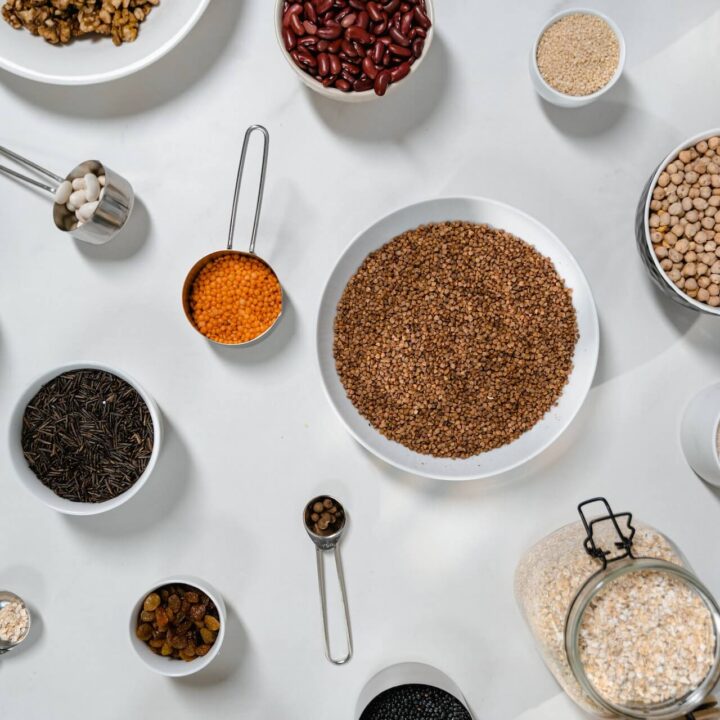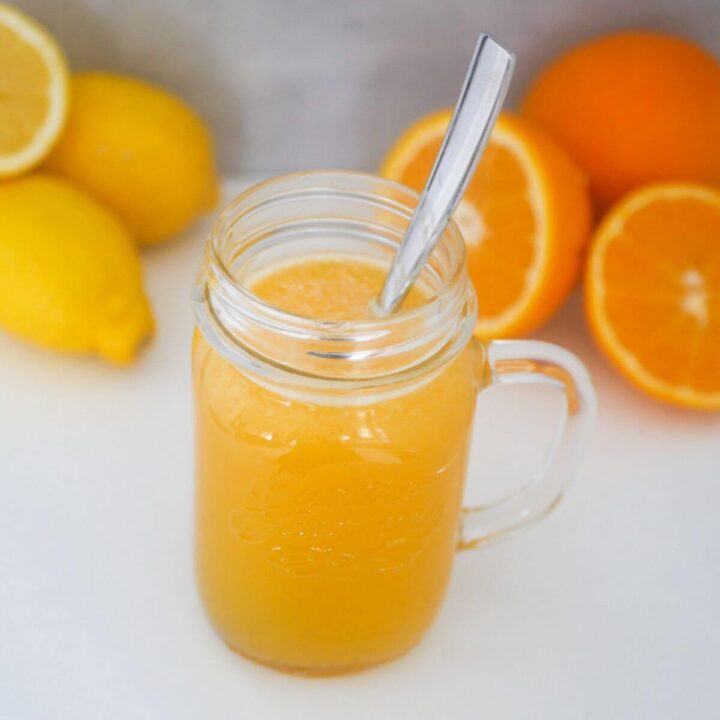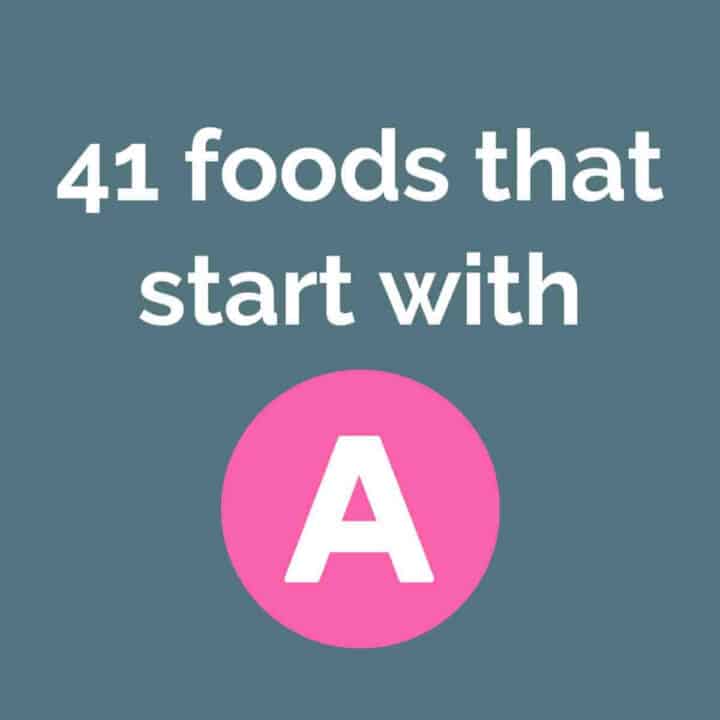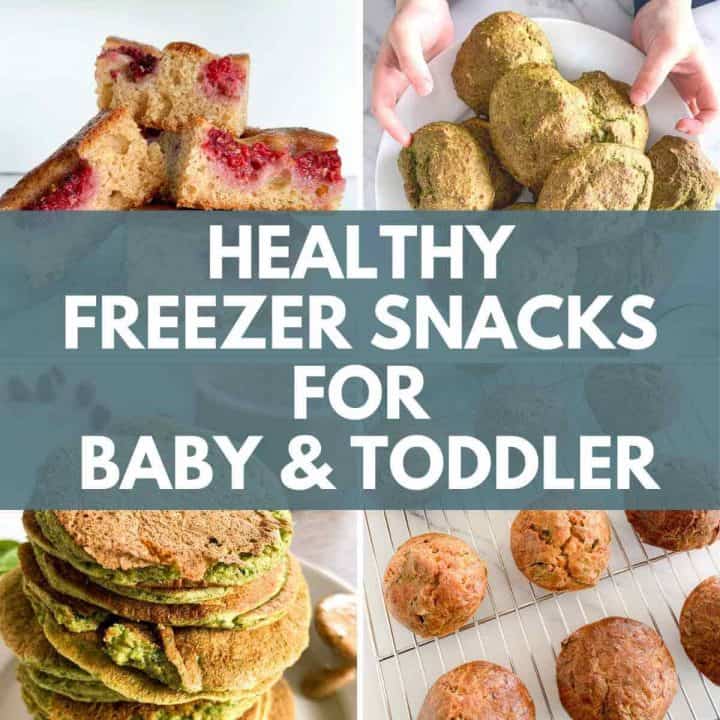
Introducing solids to your baby's diet is already a big task without all that additional information coming at you every direction. Baby-led weaning vs. purees? Chunky purees or smooth? What food should you start with? What age should you start? Should you introduce allergens earlier or later? What if they choke!? And what does anyone mean by a "stage 2 puree"?
The last question is a topic I am regularly asked about when any new baby recipe is published – in particular, how should the meal be served for babies at different ages. That's what we're talking about today.
Before getting into it, it's important to point out that how you feed your baby ultimately depends on what you're comfortable with. There is no scientific evidence that indicates that starting with one kind is better than another (e.g. BLW vs. purees).
Instead, the below is intended to serve as a guide for those of you favoring purees. The stages below follow developmental progress, moving to more advanced textures as your baby gets older.
Generally, we can divide them into 3 stages.
Stage 1 Baby Food: 4 - 6 months
Smooth purees
The American Academy of Pediatrics (AAP) and World Health Organization (WHO) agree that solid food can be given to babies once they reach about 4 months of age. However, 5-6 months is more common as breastmilk/formula continues to comfortably fulfill all nutritional needs until then.
Either way, whenever you start, most people will start with stage 1 foods.
Stage 1 means smooth purees made from single foods. At this point in your baby's development, they have just begun to sit up straight and show interest in food so their introduction should be gradual. Single food purees can be mixed with breastmilk/formula or water to thin the consistency (although mixing meat with milk can interfere with iron absorption). For cooked fruit and vegetables, using the water they were cooked in (if boiled) is ideal.
As your baby gets used to eating, you can gradually decrease the amount of liquid to make slightly thicker purees.
Foods should be introduced one at a time, with a few days in between each new addition. That way, any unexpected allergies/intolerances are easy to catch.
Stage 2 Baby Food: 7 - 9 months
Textured purees
After around 7 months, you can introduce more textured purees as well as mixed foods (I started to mix foods during month 6 but always in smooth purees). At this point, your baby's oral skills would have developed and they are getting used to regularly eating solid food instead of relying on breastmilk/formula – they should be swallowing food without a problem.
What is a "textured" puree?
This simply means that it doesn't have to be completely smooth, but can have visible chunks. Nothing too big of course – ideally no greater than the size of a pinky fingernail. Everything will also be soft so it can be easily mashed between toothless gums.
"Textured" also means that food doesn't necessarily have to be blended, but can be simply mashed with a fork.
In stage 2, you can start to use spices to make meals more interesting. I mainly use cinnamon for fruit and grain purees but also a little vanilla and some herbs like garlic and oregano. This is probably due to my Mediterranean background, but feel free to use what appeals to you (just avoid salt).
Stage 3 Baby Food: 9 - 12 months
Finger foods
Once babies hit the 9-10 month mark, it's important to start offering finger food instead of just purees. By this age, babies are really working on their pincer grip, and stage 3 baby foods are a great way to encourage them to do so.
They are also rapidly developing in their oral motor skills. Sticking to purees can delay progress so it's important to take the leap. Of course, you'll still want to make sure everything is fully cooked and cut small enough that you won't risk choking.
To make the transition easier, you can also gradually transition by serving thicker and thicker blended foods with slightly bigger chunks before moving to proper finger food.
Follow Your Instincts
It's up to you how you want to start feeding your baby. I know mothers who started with baby-led weaning from the beginning, skipping out purees altogether.
Personally I found that way too stressful! I couldn't shake the feeling that he would choke with every bite, no matter how unlikely that is in reality. So when my son started eating, I served food exactly according to the stages above. He is 8 months at the time of writing this and I still worry about him choking when his food is too lumpy!
However, I'm slowly but surely increasing the "texture" in his food, and will move on to finger foods in a couple of months once I see that he's ready.
And that's the most important thing to keep in mind – keep watching and you'll see when your baby is ready to move to the next stage.





heather
I love this guide! I’m a mom of 3 and my youngest is now 7 months. I had quite the age gap between him and my middle son so I feel like I’m relearning all of the baby things. I’m so afraid of choking, so my son has been fed purées since he started solids. Most of my friends have gone with baby led weaning and I felt so pressured to do the same. After reading this, I feel much better about my decision because after all, we have to do what feels best for our own babies. From one mom to another, thank you.